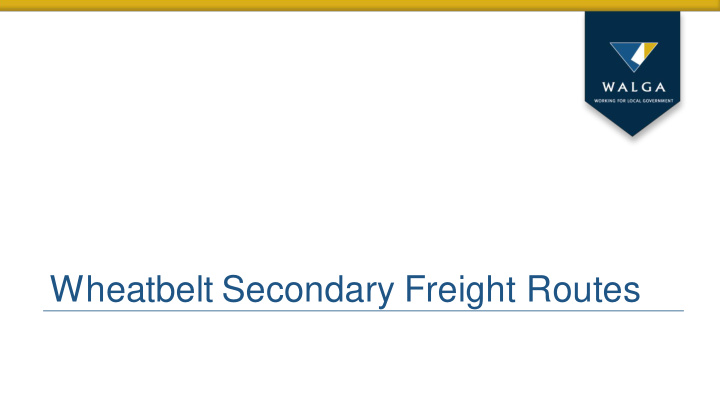



Wheatbelt Secondary Freight Routes
Wheatbelt Secondary Freight Routes • Local Government manages 88% of the public road network 41,000 km in Wheatbelt Region o • Freight task is growing and changing grain production increased 20% o average load delivered increased 37% (33.16 to 45.56) o lime use increased four fold (to > 1.2 million tpa) o 500 km of low volume rail lines closed (750,000 tpa o grain) responsive product marketing o end-to-end supply chains o
Wheatbelt Regional Transport – Snap Shot
Wheatbelt – Traditional Transport
Wheatbelt – Modern Freight Routes
Wheatbelt Secondary Freight Routes Integrated Network • RAV network continuity • Seal width (> 7m) • Formation width (10m) • Strength • Intersection Geometry
Wheatbelt Secondary Freight Routes Outcomes • competitive export industries • reduced life-cycle costs for roads • efficient road transport fleet and operations • reduced road trauma
Wheatbelt Secondary Freight Routes Process • Proposal driven through Regional Road Groups • Preferred routes identified in consultation with local industry • Data collection for preferred routes • Seeking funding for detailed analysis, design and business case • State Government support for business case or case development
Recommend
More recommend